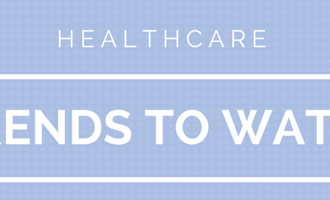The Bureau of Labor and Statistics (BLS) reported 474,000 healthcare jobs were added in 2015, increasing the number of people employed in United States hospitals to more than 5 million. And while the number of jobs continues to increase, so does the cost of healthcare – leading one to assume that productivity would trend accordingly. But unlike nearly all other sectors of the US labor economy, productivity in healthcare has historically made small gains over the past two decades and a preliminary report suggests that, in fact, it dropped for nearly a decade between 2001 and 2010. So are there ways to boost productivity and efficiently increase output in the healthcare system? The answer is yes – and while it is an unquestionably challenging task, it is also an entirely feasible one.
Staffing
Labor is by far the largest category of expense in healthcare and accounts for over 50% of the total budget. A central issue surrounding low hospital productivity is the management of labor hours and finding the right balance when cutting those hours – making sure to cut deep enough to reap the benefits but not so deep it leads to patient dissatisfaction and staff burnout/turnover. Increasing labor productivity in healthcare is also achieved by eliminating low-value activities, increasing the use of technology, and increasing standardization to avoid redoing work already done. Changing the atmosphere into one of collaboration and learning can also be beneficial, and many hospitals are trying to provide a more transparent and open environment for staff.
Performance Incentives
The success of most businesses can usually be traced back to employee satisfaction. Satisfied employees generally perform well and deliver high-quality care. They are also usually dedicated to the company and require minimal direction to perform their duties. Providing incentives to employees and rewarding them for their hard work and dedication will only serve to boost morale and the desire for individuals to continue to produce high-level work. Many hospitals have already installed a pay-for-performance system and are seeing the positive effects in both quality and efficiency.
Standardization
Standardization is essentially defining expectations and creating accountability through the implementation of protocols. Over time, research has indicated improved outcomes through the use of protocols and checklists for employees to follow to complete daily tasks. The use of these tools is a way to incorporate solid evidence based care to the patient and keep the labor flow running efficiently. For instance, standardizing admission and discharge processes – both largely within our control – will ultimately improve patient flow for maximum efficiency and clinical outcomes. Another example is the standardization of a system to track competencies staff are required to maintain certification – such as BLS recertification. The system can be as simple as a whiteboard where progress is tracked by hand or a more complex competency assessment software program, which would be automated and provide real-time reports. By and large, there is significant opportunity to create important benefits in productivity by standardizing processes and it is something all hospitals need to research.
Technology
In an age where most people carry a smartphone and tablet, technology has a huge potential to improve the productivity of a hospital. Technology is clearly not new to healthcare as many doctors and nurses use mobile devices for communication and to guide patient treatment recommendations. The use of this technology helps to increase medication compliance, improve discharge instructions, and provide a medium to double check prescriptions – all leading to increased safety and productivity of the hospital. The integration of technology has great potential to reduce costs, improve patient safety, and increase efficiency.
Automation
Automation of manual tasks is an effective strategy in reducing cost and eliminating waste in the healthcare setting. Population health management leverages automated tools to support patient engagement with appointed case managers, making the process scalable and sustainable. Of considerable importance, automation can help with labor savings by replacing manually intensive tasks which are best done by a machine and allowing nurses to go back to providing high-level professional care where clinical expertise is needed. It helps to avoid human error and fatigue – which will improve quality and consistency. An example is hospitals have found that by automating medical records and order entry they had reduced complications, cost, and an overall reduction in deaths. Automation can also allow you increased flexibility and the ability to handle a larger population of patients at one time.
In short, there are many ways hospitals can work towards bumping up their productivity statistic and this article merely brushed the surface of possibilities. As technology continues to advance you will see more opportunities for change begin to surface for health care to consider.








